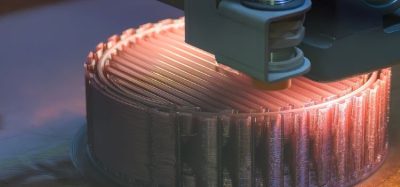Miniature pipe organ could improve medical image quality
Posted: 12 November 2018 | Iqra Farooq (European Pharmaceutical Review) | No comments yet
Researchers have developed a miniature version of the musical instrument pipe organ that could be used to improve the quality of medical imaging…


Researchers have developed a tiny version of a musical instrument that can be used to improve the quality of medical images.
Engineers and Scientists at the University of Strathclyde worked together to create a miniature version of the full sized pipe.
By broadening the the range of frequencies used to emit sound waves, the team showed how the device can improve medical images from scanners. They used a 3D printer to create the best designs of the device, combining their expertise in mathematical models and in computer simulations throughout the process.
Professor Tony Mulholland, Head of Strathclyde’s Department of Mathematics & Statistics and a partner in the research, said: “Musical instruments have a wide variety of designs but they all have one thing in common – they emit sound across a broad range of frequencies. So there is a treasure trove of design ideas for future medical imaging sensors lying waiting to be discovered amongst this vast array of designs.
“Around 20 percent of medical scans are performed using ultrasound. The scanner creates images by emitting sound waves with a frequency that lies above human hearing. The scanner operates at a single frequency – similar to a piano that can play just one note – and this accounts in part for the relatively poor resolution that one sees in ultrasound images.
“If we had a scanner that could emit waves across a broad range of frequencies, this would provide a marked improvement in the imaging capability.”
Professor James Windmill, of Strathclyde’s Centre for Ultrasonic Engineering, who is also a co-author of the research, said: “Developing wide bandwidth ultrasound systems could give significant improvements in imaging capability. Using high resolution 3D printers allows us to try new, three dimensional device designs with much faster development cycles.
“Musical instruments create sounds over a broad range of frequencies and have been carefully designed over the centuries to be very efficient at doing so. It is well known that the highest frequency pipes are the smallest in length, as in, for example, a piccolo, so to realise frequencies that are beyond human hearing – ultrasound waves – the length has to be very small indeed, of millimetres in length.
“This would be extremely difficult to construct using traditional manufacturing techniques such as those used to build musical instruments but the key is to use a high resolution 3D printer.”
The development is still currently in its early stages, and could have significant future applications.
The study was published in the journal IEEE Transaction on Ultrasonics, Ferroelectrics and Frequency Control.
Related topics
Analytical techniques, Clinical Development, Imaging, Research & Development (R&D), Technology









